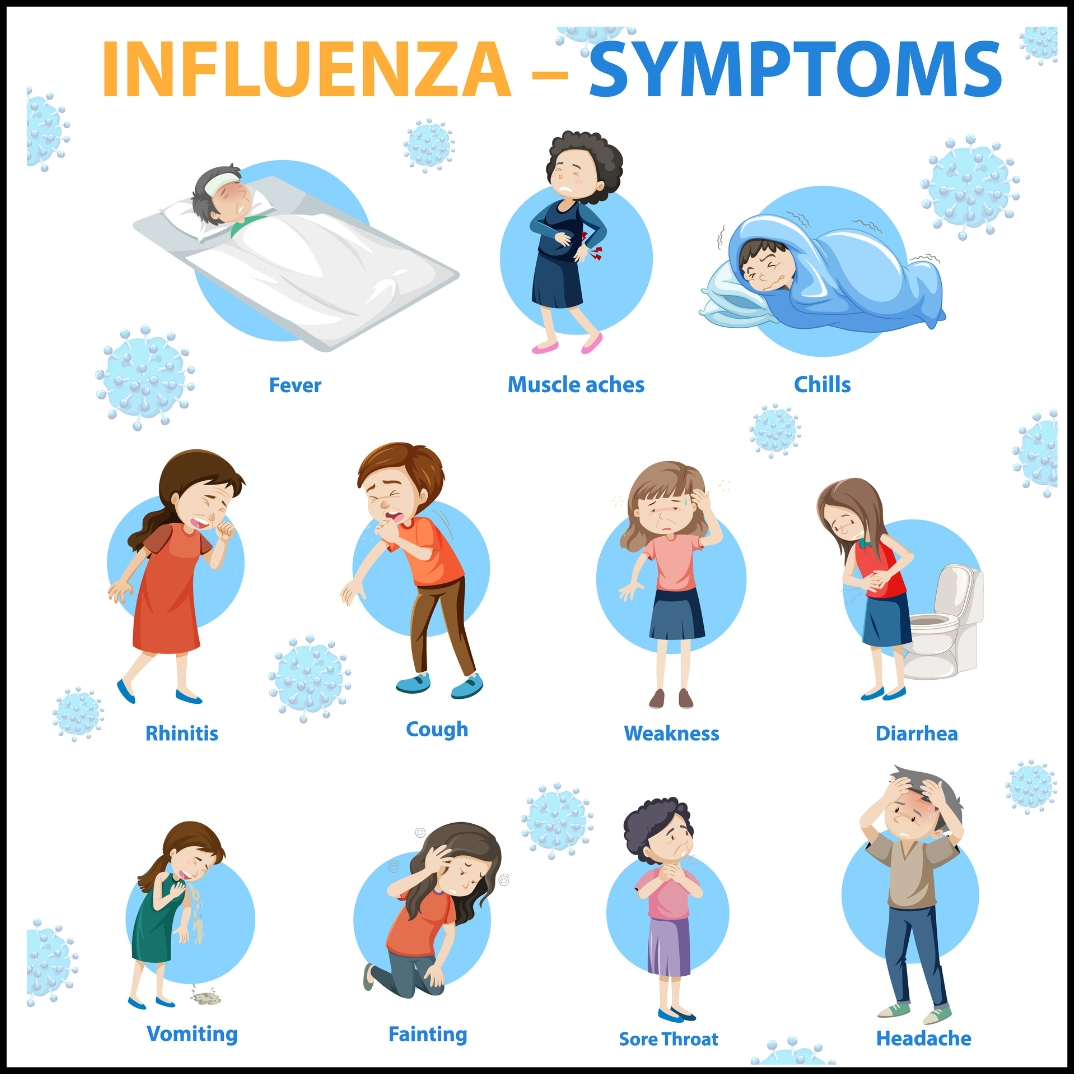
Types of Influenza Viruses Symptoms
Influenza B viruses are not divided into subtypes, but instead are further classified into two lineages: B/Yamagata and B/Victoria. Similar to influenza A viruses, influenza B viruses can then be further classified into specific clades and sub-clades. Influenza B viruses generally change more slowly in terms of their genetic and antigenic properties than influenza A viruses, especially influenza A(H3N2) viruses. Influenza surveillance data from recent years shows co-circulation of influenza B viruses from both lineages in the United States and around the world. However, the proportion of influenza B viruses from each lineage that circulate can vary by geographic location and by season. In recent years, flu B/Yamagata viruses have circulated much less frequently in comparison to flu B/Victoria viruses globally. Flu symptoms tend to come on suddenly. They may include one or all of the following:
- General feeling of being unwell
- Cough, which tends to be dry
- Stuffy or Running nose
- Sore throat
- Headache
- Muscle aches
- Body aches
- Fatigue, or Extreme tiredness
- High fever, coughing, body aches, chills, and fatigue are possible symptoms of influenza B, but they may also indicate other conditions. A healthcare professional can provide an accurate diagnosis.
Flu Treatment
Flu is a contagious respiratory illness caused by influenza viruses that infect the nose, throat, and sometimes the lungs. It can cause mild to severe illness, and at times can lead to death. The best way to prevent flu is by getting a flu vaccine each year. Flu Symptoms Flu can cause mild to severe illness, and at times can lead to death. Flu symptoms usually come on suddenly. People who have flu often feel some or all of these signs and symptoms: fever* or feeling feverish/chills cough sore throat runny or stuffy nose muscle or body aches headaches fatigue (tiredness) some people may have vomiting and diarrhea, though this is more common in children than adults. If you get sick with flu, influenza antiviral drugs may be a treatment option. Antiviral drugs work best when started early, ideally no later than two days after your flu symptoms begin. Check with your doctor promptly if you are at higher risk of serious flu complications and you get flu symptoms. People at higher risk of flu complications include young children, adults 65 years of age and older, pregnant people, and people with certain medical conditions such as asthma, diabetes and heart disease. Treatment of flu with influenza antiviral medications works best when started within two days after flu symptoms begin and can lessen symptoms and shorten the time you are sick by about a day. Starting antiviral treatment shortly after symptoms begin also can help reduce some flu complications.
How Flu Spreads
Most experts believe that flu viruses spread mainly by tiny droplets made when people with flu cough, sneeze, or talk. These droplets can land in the mouths or noses of people who are nearby. Less often, a person might get flu by touching a surface or object that has flu virus on it and then touching their own mouth, nose or possibly their eyes.
How long does it take for type B flu to go away?
This type of flu is highly contagious. While anyone can develop flu type B, young children and people with underlying health conditions have the highest risk. Fortunately, influenza B usually goes away on its own within a week—with proper rest and hydration
Is influenza B highly contagious?
Both influenza A and influenza B are extremely contagious. People who get either type can spread the virus to others from up to six feet away when they cough or sneeze. You can also contract the virus by touching a surface that has the virus on it and then touching your nose or mouth.
How does influenza B differ from types A and C?
Influenza B tends to cause a milder form of the flu than influenza A. While influenza A can lead to moderate-to-severe flu symptoms across all age groups, and in animals, influenza B only affects humans. Also, influenza B typically affects children more often than adults. It generally causes stronger symptoms than influenza C.
Most experts believe that flu viruses spread mainly by tiny droplets made when people with flu cough, sneeze, or talk. These droplets can land in the mouths or noses of people who are nearby. Less often, a person might get flu by touching a surface or object that has flu virus on it and then touching their own mouth, nose or possibly their eyes.






